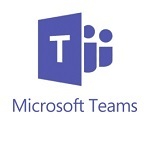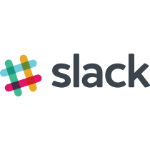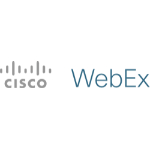TechnologyCounter provides genuine, unbiased real user reviews to help buyers make informed decisions. We may earn a referral fee when you purchase through our links, at no extra cost to you.
List of 15 Best Audio Conferencing Software
Showing 1 - 15 of 20 productsGoogle Meet is a video conferencing platform that allows individuals, teams, and organizations to connect and collaborate from anywhere. With its user-friendly interface, seamless integration with other Google tools, performance, Google Meet is the i...Read Google Meet Reviews
BlueJeans is a and versatile video conferencing platform that allows teams to connect, collaborate, and communicate seamlessly. With features such as HD video, screen sharing, and live chat, BlueJeans makes remote meetings and virtual events feel as...Read BlueJeans Reviews
GoToMeeting is an innovative web conferencing software that allows teams to collaborate and connect in real-time, no matter where they are located. With its easy-to-use interface features, GoToMeeting is the ideal solution for businesses looking to s...Read GoToMeeting Reviews
FreeConferenceCall is a platform that allows individuals and businesses to connect with ease and efficiency. With its user-friendly interface and seamless audio and video capabilities, it has become a go-to solution for remote meetings, interviews, a...Read FreeConferenceCall Reviews
LoopUp is a communication tool that simplifies and streamlines remote meetings. Say goodbye to clunky conference calls and hello to a seamless experience that promotes collaboration and productivity. With LoopUp, you can effortlessly host online meet...Read LoopUp Reviews
ClickMeeting is a and dynamic online meeting and webinar software designed to simplify communication and collaboration across teams and organizations. With its user-friendly interface and robust features, ClickMeeting provides a seamless and hassle-f...Read ClickMeeting Reviews
Skype is a reliable and user-friendly communication platform that connects you with loved ones, colleagues, and clients all around the world. With its seamless video and voice calling features, instant messaging, and screen sharing, Skype makes stayi...Read Skype Reviews
Microsoft Teams is a collaboration tool for any team. With its seamless integration of chat, video conferencing, file sharing, and more, Teams streamlines communication and boosts productivity. Say goodbye to endless email chains and scattered inform...Read Microsoft Teams Reviews
ZOOM is a tool for seamless video conferencing, allowing you to connect with your team, friends, and family no matter where you are. With its intuitive interface features, ZOOM provides the perfect solution for efficient remote communication. Say goo...Read ZOOM Reviews
Slack is more than just a communication tool, its a collaboration hub that brings teams together. With its user-friendly interface and seamless integrations, Slack makes it easy to stay connected and productive, no matter where you are. Say goodbye t...Read Slack Reviews
Cisco WebEx is a video conferencing platform that facilitates seamless communication and collaboration for businesses of all sizes. With an easy-to-use interface and robust features, WebEx allows teams to connect, share ideas, and collaborate in real...Read Cisco WebEx Reviews
Zoho Meeting is a secure online meeting platform and webinar solution that helps you connect, collaborate, and work remotely with efficacy. Schedule online meetings, stream live webinars, and enhance your remote collaboration experience with our high...Read Zoho Meeting Reviews
LiveWebinar is a online platform designed for Agencies and Enterprises. It provides a range of features including Internal Meetings, Q & A, Meeting Room Booking, Action Item Tracking, and the ability to have multiple hosts all in one convenient plac...Read LiveWebinar Reviews
Lifesize, the ultimate collaboration solution for businesses of all sizes. With its seamless HD video conferencing, crystal-clear audio, and powerful content-sharing capabilities, Lifesize allows teams to connect and collaborate effortlessly from any...Read Lifesize Reviews
Livestorm is a and innovative webinar software that allows you to effortlessly create, promote, and host engaging online events. With its user-friendly interface features, Livestorm makes it easy to connect with your audience and deliver dynamic pres...Read Livestorm Reviews
- What Is Audio Conferencing Software?
- Top Reasons Why Businesses Need Audio Conferencing Software?
- What Are the Top Key Features of Audio Conferencing Software?
- What Are the Top Benefits of Audio Conferencing Software?
- What Are the Steps to Choose the Right Audio Conferencing Software?
- What Are the Types of Audio Conferencing Software for Different Industries?
- What Are the Technology Trends for Best Audio Conferencing Software?
- What Are the Deployment Options for Audio Conferencing Software?
What Is Audio Conferencing Software?
Audio conferencing software refers to a sophisticated form of communication technology that enables individuals to establish connections and engage in communication with one another via the Internet and/or telephone networks.
This platform enables individuals to engage in virtual meetings that encompass the sharing of audio, video, and various multimedia elements while facilitating the exchange of ideas and fostering dialogue. Audio conference solutions often necessitate minimal hardware and setup, so enabling users to promptly and effortlessly establish and participate in meetings.
Typically, the essential components for engaging in this activity encompass a computer, an internet connection, a microphone, and either a pair of headphones or speakers. The majority of audio conference tools include fundamental features, such as the capacity to record meetings, share files, and invite more participants.
Certain of the best audio conferencing software packages provide enhanced functionalities, including but not limited to multiparty calling, high-definition audio and video streaming, cloud storage, analytics, and integrations with various applications such as file sharing and document collaboration.
These characteristics enable consumers to optimize their efficiency and fully utilize their audio conferencing encounters. In general, audio conference solutions is a highly advantageous tool for enterprises, enabling them to establish connections with geographically dispersed employees and customers and conduct virtual meetings without necessitating physical presence.
By utilizing appropriate audio conferencing software, organizations can overcome significant geographical barriers and establish enduring and significant relationships.
Top Reasons Why Businesses Need Audio Conferencing Software?
1. One of the key benefits of technology is its ability to maintain connectivity between firms and their people, even in situations when physical proximity is not possible.
2. The utilization of several participants in a meeting enhances meeting efficiency.
3. Enables instantaneous communication between individuals situated in disparate geographical places.
4. The software provides users with the capability to efficiently oversee and document meetings.
5. The platform facilitates the establishment of a collaborative atmosphere wherein teams may effectively collaborate and promptly exchange ideas.
6. The inclusion of remote members in a conference call facilitates the improvement of team productivity.
7. Enhances communication protocols and cultivates enhanced procedural uniformity.
8. The feature allows for the convenience of placing phone calls from any location and at any given time.
9. One benefit of virtual meetings is the potential to decrease expenses related to travel for face-to-face gatherings.
10. Maintains systematic organization of signature approval and document signature procedures.
11. Organizes and conducts educational training programs for both staff and customers.
12. Facilitates expeditious problem-solving and decision-making processes within the organizational context.
13. One of the benefits of this approach is the enhancement of accountability and connection with customers.
14. The utilization of this technology facilitates an improved level of customer care and assistance through the expeditious response capabilities it provides to the firm.
15. The platform provides the functionality to facilitate webinars, enabling participants to deliver video presentations within a protected setting.
What Are the Top Key Features of Audio Conferencing Software?
The top key features of audio conferencing software are:
1. Automated dial-in: The utilization of automated dial-in functionality enables users to establish a direct connection to a conference bridge by inputting a specified access number through their telecommunication devices. This obviates the necessity for a conference organizer to distribute access codes and dial-in numbers.
2. Recording capabilities: Numerous of the best audio conferencing software solutions include the convenient functionality of call recording, allowing users to effortlessly capture and store calls for subsequent viewing. This functionality proves to be advantageous in situations where there is a want to document, record, or subsequently examine meetings.
3. Multi-party audio conferencing: Numerous top audio conferencing software solutions include the convenient feature of call recording, allowing users to effortlessly capture and store calls for subsequent viewing. This functionality proves to be advantageous in situations where it is necessary to document, record, or subsequently examine meetings.
4. Voice enhancement: Audio conferencing software provides several audio improvement functionalities, including noise cancellation, echo reduction, and speech recognition. This facilitates a dialogue of superior quality and enhanced comprehensibility.
5. Line Management: This functionality enables users to effectively oversee the conference lines inside a conference call setting. Various administrative functions can be implemented, such as the assignment of moderators, the blocking of lines, the muting of lines, and other similar actions.
6. Advanced features: Advanced audio conference solutions offer a range of functions, including seamless integration with other software solutions, web and video conferencing capabilities, as well as collaborative functionalities.
7. Security: Audio conference tool solutions provide a range of security features, including encryption and authentication mechanisms, which effectively safeguard the confidentiality of calls and ensure the protection of critical information.
8. Mobility: Audio conferencing systems enable convenient and readily available connectivity from any location with internet connectivity. This can be achieved through the utilization of either mobile applications or web browser applications.
What Are the Top Benefits of Audio Conferencing Software?
1. Improved Collaboration: Audio conferencing software facilitates real-time communication among participants, allowing them to engage in discussions, collaborate on decision-making processes, generate innovative ideas, and effectively address and resolve problems.
2. Greater Accessibility: Audio conferencing facilitates seamless communication and collaboration with geographically dispersed personnel, business associates, clientele, and other relevant parties.
3. Increased Productivity: Audio conferencing serves as a viable alternative to face-to-face meetings, enabling individuals to participate regardless of their geographical location.
4. Cost Savings: The utilization of audio conferencing enables participants to achieve time and cost savings by eliminating the need for travel and associated expenditures.
5. Scalability: The best audio conferencing software provides a diverse range of features to accommodate scalability requirements for bigger groups or to facilitate dynamic usage for smaller groups.
6. Online Recordings: Individuals are provided with the opportunity to access and distribute session recordings through the Internet, enabling them to revisit and engage in discussions regarding the material at a subsequent time.
7. Improved User Engagement: Audio conferencing offers a diverse range of tools and features that facilitate participant engagement and foster continuous connectivity during the session.
8. Enhanced Security: Audio conferencing utilizes the Advanced Encryption Standard (AES) encryption protocol to ensure the security and confidentiality of audio transfers.
9. Cross-Platform Compatibility: Audio conferencing is compatible with a range of platforms, encompassing PC, Mac, iOS, and Android operating systems.
10. Customizable Interface: The utilization of audio conferencing technology provides users with the opportunity to personalize their interface and preferences, hence enabling the creation of an optimal user experience.
What Are the Steps to Choose the Right Audio Conferencing Software?
1. Determine Your Requirements: Prior to choosing any audio conferencing software, it is imperative to ascertain your individual requirements. It is imperative to ascertain the required number of participants for simultaneous conferencing, establish the allocated budget for the best audio conferencing software, and identify any other desirable features or requirements.
2. Research Various Software: Once the criteria and standards for the audio conference solutions have been established, it is imperative to conduct a thorough study on the different software alternatives that are now accessible.
It is imperative to conduct a thorough examination of the cost, functionality, and general quality of each software variant in order to make an informed decision that aligns with one's requirements.
3. Contact the Manufacturer: After identifying many audio conferencing software solutions that align with the specified needs and specifications, it is advisable to initiate communication with the respective manufacturer. Please feel free to inquire about any aspects of the software's cost, functionality, and general quality.
4. Try Out the Software: Prior to reaching a conclusive determination regarding the top audio conferencing software, it is advisable to engage in a trial period with the software. This will enable users to gain insight into the functionality of the product and assess its compatibility with their requirements.
5. Make a Decision: After conducting a trial of the best audio conferencing software, it is now necessary to reach a conclusion. It is imperative to carefully select a software solution that aligns with your specific requirements, adheres to the predetermined budgetary constraints, and upholds a level of quality that instills confidence.
What Are the Types of Audio Conferencing Software for Different Industries?
1. Enterprise audio conferencing software: This particular program is specifically developed for use within corporate and enterprise settings, including industries like as banking, finance, and healthcare.
Typically, enterprise audio conferencing software is equipped with several functionalities, including but not limited to security measures and the capability to share documents.
2. Education audio conferencing software: This particular program is specifically tailored for implementation within educational institutions, including but not limited to colleges, universities, and vocational schools.
Common functionalities of this platform often encompass the ability to record lectures, facilitate group activities through breakout rooms, and incorporate chat systems for seamless communication.
3. Team and collaboration audio conferencing software: This particular software is specifically developed to cater to teams requiring collaborative capabilities for ongoing or in-progress tasks. Common functionalities of this software generally encompass video conferencing, document collaboration, and the ability to schedule meetings.
4. Sales and conferencing audio conferencing software: This particular program is specifically developed for enterprises engaged in sales, marketing, and customer service operations. Typically, it offers functionalities such as the facilitation of webinars, screen sharing capabilities, and the ability to record sessions.
5. Small business audio conferencing software: This particular software is specifically developed to cater to the needs of small-scale enterprises. Commonly, it offers functionalities such as telephonic dial-in, individual meeting spaces, and the ability to schedule conferences.
6. Multimedia audio conferencing software: This category of software encompasses voice conferencing software that incorporates additional functionalities such as video streaming, image sharing, and file sharing. It is frequently employed within artistic or creative sectors, such as the music, film, and graphics domains.
What Are the Technology Trends for Best Audio Conferencing Software?
The demand for high-quality the best audio conferencing software has experienced substantial growth in various industries in recent years. The significance of audio conferencing in facilitating collaboration among distant and distributed teams necessitates a comprehensive comprehension of the most recent technological advancements in the software.
The predominant trend observed is a notable enhancement in functionality and user-oriented features. Organizations are actively endeavoring to create software that provides a comprehensive range of functionalities and seamless integrations since this facilitates users in maximizing the use of the program.
This frequently involves the incorporation of widely used tools like Salesforce, Google Calendar, and various other applications, enabling users to enhance their conferencing management capabilities. One notable trend is the enhancement of audio quality.
The provision of high-quality audio is of utmost significance in ensuring the effectiveness of conferencing, prompting developers to exert efforts in designing software capable of delivering impeccable sound reproduction regardless of the surrounding conditions.
Furthermore, several software applications aim to offer users the capability to access recorded transcripts of their discussions, enabling them to efficiently revisit and examine the specific aspects of these interactions at a later time. One notable trend observed is the growing prevalence of cloud-based software use.
Cloud-based solutions are experiencing increasing popularity due to their enhanced flexibility and scalability compared to conventional on-premise solutions. This enables firms to conveniently adjust their audio conferencing capacity under their specific requirements, facilitating expansion or reduction as necessary.
The following are key technological advances associated with the most optimal top audio conferencing software. Companies need to possess knowledge regarding the many features offered by audio conferencing systems to optimize their utilization.
By capitalizing on these emerging patterns, teams have the potential to enhance the quality and efficacy of their audio conferencing.
What Are the Deployment Options for Audio Conferencing Software?
There exist multiple deployment methods for best audio conferencing software, encompassing
1. On-Premises Deployment: This particular deployment strategy entails the installation and integration of audio conferencing software onto an established private data network, utilizing the organization's hardware infrastructure. The deployment option described is widely recognized as the conventional approach for implementing top audio conferencing software.
2. Cloud-based Deployment: The provisioning of cloud-based audio conferencing refers to the practice of deploying the audio conferencing software on a remote server, as opposed to utilizing the organization's internal hardware infrastructure.
This solution offers scalability and cost-effectiveness for enterprises since it delegates all upgrade and maintenance responsibilities to the cloud provider.
3. Hybrid Deployment: The hybrid deployment option entails the integration of both on-premises and cloud-based deployment alternatives. This feature enables enterprises to leverage the advantages of cloud-based solutions while also retaining the control and dependability associated with on-premises solutions.
4. Software-as-a-Service (SaaS): The adoption of Software-as-a-Service (SaaS) for audio conferencing provides customers with the ability to access audio conferencing services through the Internet.
This solution is particularly advantageous for enterprises that lack the necessary resources to independently run their own on-premises system, as the responsibility for all management activities is assumed by the cloud provider.















